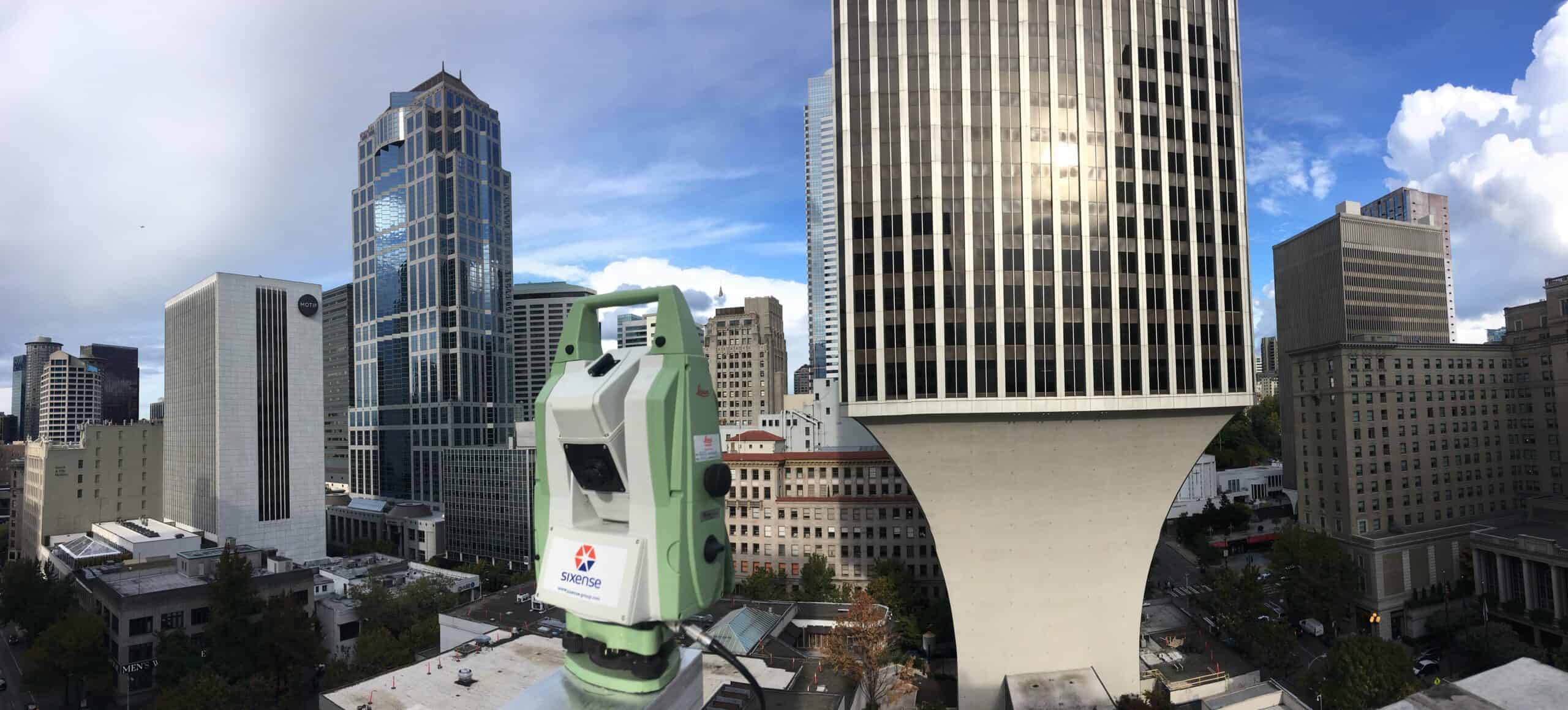Rainier Square Tower | USA
Project summary
Images of the project
The New Rainier Square Tower
The new Rainier Square Tower was built in 2017 and occupies a prominent position in Seattle’s skyline. The highrise is approximately 850 ft tall and contains 1.1M square feet of luxury office, retail, and residential space. It is comprised of 58 stories and 7 levels of underground garage.
Sixense Monitoring
Sixense was contracted to monitor the shoring, adjacent streets, and neighboring high-value asset buildings. Specifically, the 41-story historical Rainier Tower foundation mat.
To answer the monitoring needs of such a sensitive project, Hart Crowser (a geotechnical engineering and environmental consultancy) partnered with Sixense to develop and deploy a fleet of highly sensitive and reliable instruments on the project:
- 4 AMTS
- 500 Monitoring Targets
- 16 Biaxial Tiltmeters
- 1 Project Camera
- 1 Weather Station
Throughout the project duration, data was collected 24/7, allowing the geotechnical team to validate daily design assumptions and adjust production methods as needed.
Challenges of the Rainier Square Tower Project
As with most urban excavation projects, Seattle’s city center was compact, dense, and very active. In this configuration, time was critical, as any delay on the project could cause high-impact disturbances in the neighborhood.
Also, the piling operation took place just a few feet from the foundation mat of the iconic and sensitive 41-story Rainier Square Tower, with tie-backs running below the mat. To ensure the shoring’s stability and optimal reactivity in case of movement, the 100 ft deep excavation required five levels of deflection monitoring along the excavation walls (as opposed to monitoring at the top of the pile only for conventional excavation).
Project Completion
At its completion, Rainier Square Tower is the second-tallest building on downtown Seattle’s crowded skyline.
Utilizing Sixense’s safe, efficient, and highly innovative monitoring system the high-rise structure was successfully complete in 2020.
